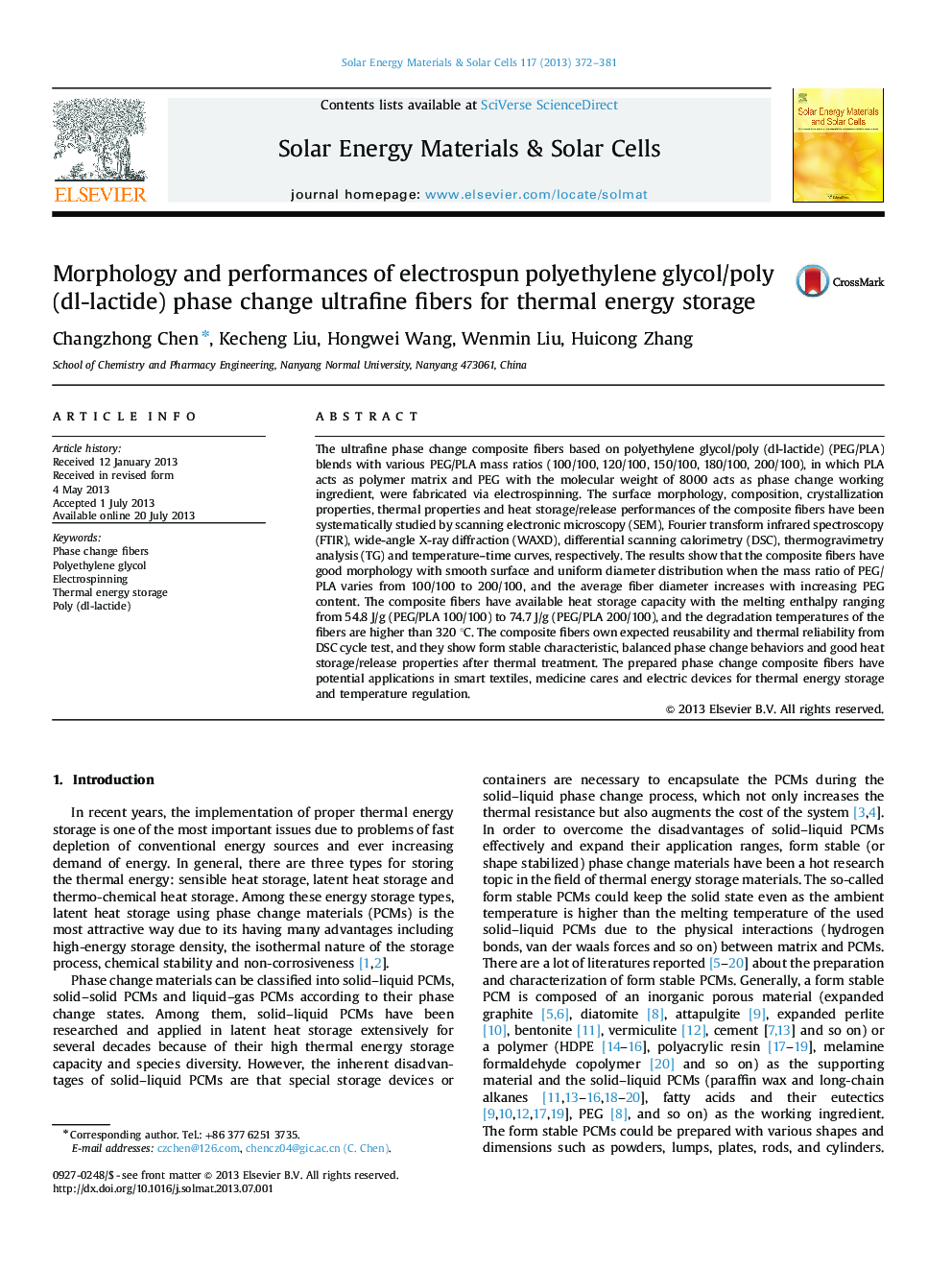| Article ID | Journal | Published Year | Pages | File Type |
|---|---|---|---|---|
| 6536321 | Solar Energy Materials and Solar Cells | 2013 | 10 Pages |
Abstract
The ultrafine phase change composite fibers based on polyethylene glycol/poly (dl-lactide) (PEG/PLA) blends with various PEG/PLA mass ratios (100/100, 120/100, 150/100, 180/100, 200/100), in which PLA acts as polymer matrix and PEG with the molecular weight of 8000 acts as phase change working ingredient, were fabricated via electrospinning. The surface morphology, composition, crystallization properties, thermal properties and heat storage/release performances of the composite fibers have been systematically studied by scanning electronic microscopy (SEM), Fourier transform infrared spectroscopy (FTIR), wide-angle X-ray diffraction (WAXD), differential scanning calorimetry (DSC), thermogravimetry analysis (TG) and temperature-time curves, respectively. The results show that the composite fibers have good morphology with smooth surface and uniform diameter distribution when the mass ratio of PEG/PLA varies from 100/100 to 200/100, and the average fiber diameter increases with increasing PEG content. The composite fibers have available heat storage capacity with the melting enthalpy ranging from 54.8 J/g (PEG/PLA 100/100) to 74.7 J/g (PEG/PLA 200/100), and the degradation temperatures of the fibers are higher than 320 °C. The composite fibers own expected reusability and thermal reliability from DSC cycle test, and they show form stable characteristic, balanced phase change behaviors and good heat storage/release properties after thermal treatment. The prepared phase change composite fibers have potential applications in smart textiles, medicine cares and electric devices for thermal energy storage and temperature regulation.
Related Topics
Physical Sciences and Engineering
Chemical Engineering
Catalysis
Authors
Changzhong Chen, Kecheng Liu, Hongwei Wang, Wenmin Liu, Huicong Zhang,
